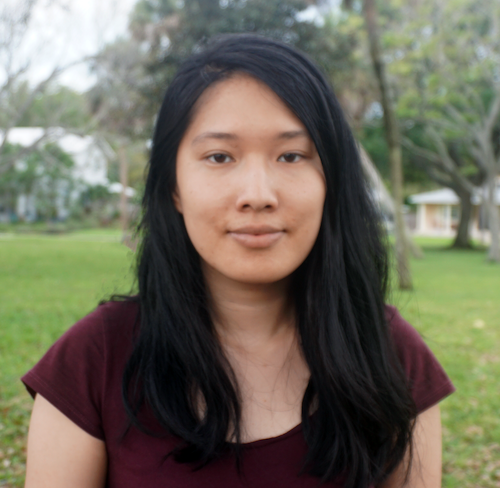The DallasNews Corporation is reassigning the reporting staff of its Spanish-language paper Al Día Dallas to teams on the Dallas Morning News in March, stoking complaints and concern.
Al Día, which was founded in 2003 and publishes a print edition weekly, has traditionally relied on its own dedicated team of reporters and freelancers. Occasionally, stories from The Dallas Morning News are translated and published in Al Día. Next month, however, the five-person team at Al Día will be redeployed to the main newsroom and in some cases assigned different beats.
Though they will become part of teams at the Morning News, they will continue reporting and writing in Spanish, executive editor Katrice Hardy said, and their work will still appear in Al Día.
Some of the Al Día staff felt blindsided when they were informed of their reassignments on Feb. 6 during a regular morning meeting. As word spread throughout the Morning News staff and beyond, initial reactions ranged from anger to heartbreak and disbelief.
The Dallas News Guild — the union representing staff at The Dallas Morning News and Al Día — published a Twitter thread and statement in which it condemned the changes. The union said that the Al Día staff would no longer “create original content written in Spanish,” which led many to believe that the Al Día staff would no longer be able to report in Spanish. Journalists retweeted the thread, decrying the dissolution of a vital source of news for the local Hispanic and Latino populations. Journalism organizations and outlets picked up the news, and one even reported that Al Día would be closing.
Hardy said most of that information was wrong. In a phone call with Poynter, she listed several inaccuracies: the idea that there would no longer be original reporting in Spanish, that Al Día was closing and that the changes were immediate. She rejected the notion that her organization is neglecting the Al Día audience.
In her note to the staff and in her interview with Poynter, she said the changes are intended to help Al Día expand its audience, which has not been growing. More than 40% of the population in the Dallas-Fort Worth area is Hispanic or Latino. Traditionally, Al Día has focused on recent immigrants who only speak Spanish, said Hardy, who is also a member of Poynter’s National Advisory Board. However, Census data shows that 80% of the Hispanic population in the Dallas-Fort Worth area was born in the United States and many are bilingual.
Hardy said that she considers Al Día profitable, but its content is the “poorest performing content in the room” in terms of readership. Pageviews have been declining, as they have across the news industry, and changing demographics provide an opportunity for Al Día to cater to bilingual readers.
“We’re really trying to do a better job of growing this audience,” Hardy said. “We’re trying to get the whole newsroom to take on this mission for us and not just have it be on the backs of Al Día.”
The Al Día reporters will be able to help the Morning News teams they’ve joined focus more on serving Hispanic audiences, Hardy said. She added that the changes would allow Al Día’s journalists — Lorena Flores, Abraham Nudelstejer, José Luis Adriano, María Ramos Pacheco and Imelda García — to take on more enterprise stories.
“We won’t survive as a newspaper if we don’t serve this audience,” Hardy said. “Reporters will still be doing original reporting authentically in Spanish, the way they have been doing all along. We actually want more people in the room. The integration is so that a lot more of our stories have this perspective and this lens.”
But some of Al Día’s team and its supporters who have read the publication for two decades are not so sure of Hardy’s approach.
Where Hardy sees more stories with the Hispanic perspective, the Spanish-language staff see the possibility of fewer stories with Al Día’s signature hyperfocus on the community. They fear a lack of focus and commitment if the resources are spread around.
“The Al Día team believes this will leave an audience that’s been historically forgotten in our region without a voice, not only because of the language, but because of the content,” reads, in part, a Feb. 10 statement in Spanish that García shared with Poynter on behalf of the Al Día team. “We reported stories in Spanish and we wrote them in Spanish, with the same cultural framework, knowing what this and that means for them (our audience). When people feel identified and know that their story will be read by their own community, who are like them, not only do they have great trust but they know they are represented. And representation matters, in a place where more than 40% of the population is Hispanic.”
A changing Al Día
Details about the changes were initially sparse, staff said. During the Feb. 6 meeting with Hardy, Al Día staff writer Imelda García recalled the staff would be reassigned come March but did not recall a detailed breakdown.
Two days later, Hardy emailed Morning News staff about the changes and reassignments for each Al Día staffer. The email, which Poynter reviewed, said Al Día will continue to “publish everyday stories written in Spanish and translations from DMN stories.”
When Poynter informed Dallas News Guild unit chair Leah Waters that the Al Día staff would be able to report in Spanish, Waters said that was news to her. She criticized the company’s “haphazard communication rollout” and said that experiences with management prior to Hardy’s arrival in 2021 have left workers “fearful” of sudden changes.
“We’re really fearful of people coming in, making changes that don’t actually help, and then leaving,” Waters said.
“That’s why we have a union — because we want to be involved. In fact, we think the best plan forward is one that involves workers’ input.”
The company did not consult Al Día reporters before reassigning them, Waters said, which has led to staff receiving beats ill-suited to their experience. She pointed to one staffer who has a history of covering hard news topics like politics being reassigned to the arts and entertainment desk.
“They’re being placed into jobs that they did not ask for without their consent, with very little regard to how well it fits their skills and experience,” Waters said.
Hardy said that the beat reassignments were done in consultation with Al Día managing editor Alfredo Carbajal. Carbajal forwarded questions to Hardy.
Waters sees the changes as part of a trend of the DallasNews Corporation’s undervaluing of Al Día. Al Día journalists are paid less than their counterparts at the Dallas Morning News, and in some cases, the disparities amount to tens of thousands of dollars. Waters gave two examples from the Guild’s pay study: One Al Día reporter with 15 years of experience makes $49,000 a year, while a reporter at the Dallas Morning News with comparable experience makes over $70,000 a year. Similarly, an Al Día editor with 23 years of experience makes $53,000 a year while an editor at the Morning News with comparable experience makes over $75,000. The company has told the union that salaries at Al Día are commensurate with those being offered at other Spanish-language publications, which typically pay less, Waters said.
Hardy declined to comment on specific salaries but said the company has made an “aggressive plan” to raise salaries across the newsroom through the union’s contract, which is currently being negotiated. The two sides have been bargaining for more than two years.
Al Día’s newsroom has shrunk over the years. In 2008, the publication had roughly 40 people on its editorial, design and business teams, Al Día staff said. Mass layoffs hit the whole company during the global recession, and Al Día was left with a staff of seven to eight. In the last year or so, the team has been reduced to five staff writers.
‘A bridge to them’
After news broke of management’s plans, readers and journalists shared online what Al Día means to them and their families.
“It is the only publication I don’t have to mentally translate from English to Spanish,” Dallas resident Esmeralda Galvan told Poynter. There were always copies of Al Día in their relatives’ kitchens. “Al Día is our little slice from home. Our language. Es nuestra casita.”
Adriana Pérez, a native of Ecuador, interned with Al Día in 2021 because she wanted the opportunity to report in Spanish.
“I think this issue is more than just about literally speaking or reporting in Spanish,” said Pérez. “I think it’s about being able to speak to someone’s culture, and to where someone comes from and what they want to know. It’s speaking their language in a metaphorical way as well.”
Pérez recalled an assignment for Al Día in which she reported on different North Texas cities’ rules for keeping backyard chickens. Many people in the Latino community were interested in that, she said. The story was one of her most-read.
García said Spanish speakers in the Dallas community are usually among the most unprotected, with the least information, and Al Día provides vital service journalism. During the pandemic, Al Día gave readers information about where they could go for vaccinations and how COVID-19 was impacting the Latino community. The publication maintains a community calendar of events and informs readers whenever there’s a health fair or when a certain consulate is open on Saturdays (a welcome service for new immigrants or those who work during the week).
“We are sad not only for the change in our roles, but also because the community that trusted in us won’t be able to rely on us,” García said. “They’re going to call us and say, ‘This is happening in this community …’ and we’ll no longer be there for them. We will be doing different things.”
Daily newspapers cut their Spanish-language outlets due to a variety of pressures, such as shifts to digital distribution or declines in advertising revenue. Pew Research Center found that average per-paper circulation for the 20 largest Hispanic newspapers in the U.S. remained steady from 2015 to 2019 but dropped by 8% from 2020 to 2021. In 2018, for example, the Austin American-Statesman ended its weekly Spanish-language newspaper, Ahora Sí. And in 2021, the Fort Worth Star-Telegram announced it would stop printing La Estrella — a free bilingual weekly publication — and publish it online only.
There are no plans to close Al Día, Hardy said. The outlet will continue to publish the utility content its readers have found so helpful in the past, like voting guides and how-tos.
Al Día is the largest Spanish-language newspaper in Dallas-Fort Worth. There are seven other Spanish-language outlets in the area, Nieman Lab reported, including three television stations and three websites that focus on specific topics like sports or entertainment. But when it comes to newspapers, “Al Día is definitely the one you see everywhere,” said Alex Hernández-Nino, a former journalist who lives in the Dallas-Fort Worth area.
Carmen Graciela Díaz, Director of the Bilingual Journalism Program at the Craig Newmark Graduate School of Journalism at CUNY and a bilingual journalist herself, said the overall decline in original reporting in Spanish is worrisome, particularly considering that the Latino population in the United States is nearly 20% of the entire population.
The decrease in Spanish-language journalism affects not only the journalists behind such work, but their readers, said Díaz, who declined to comment specifically on the Al Día situation because she didn’t have the full details.
“The community is the one that suffers,” she said. “Producing journalism in Spanish for the community always, always serves as a bridge to them, especially when traditional media outlets have historically underserved and misunderstood this community.”







